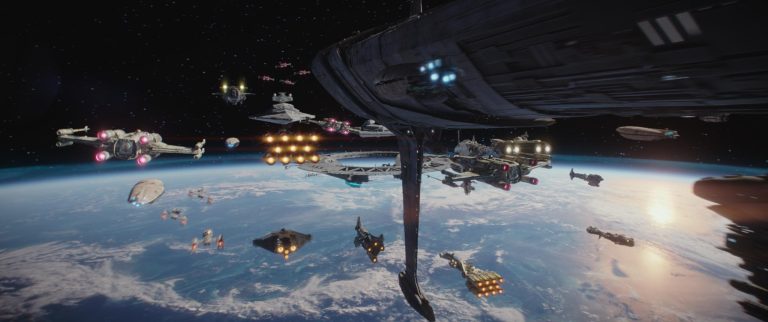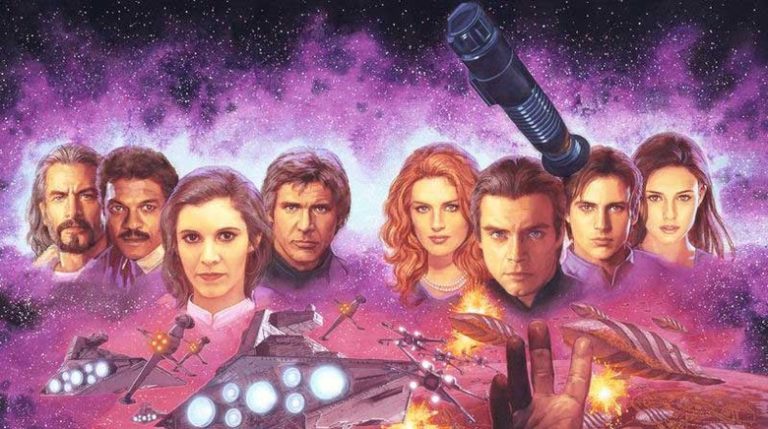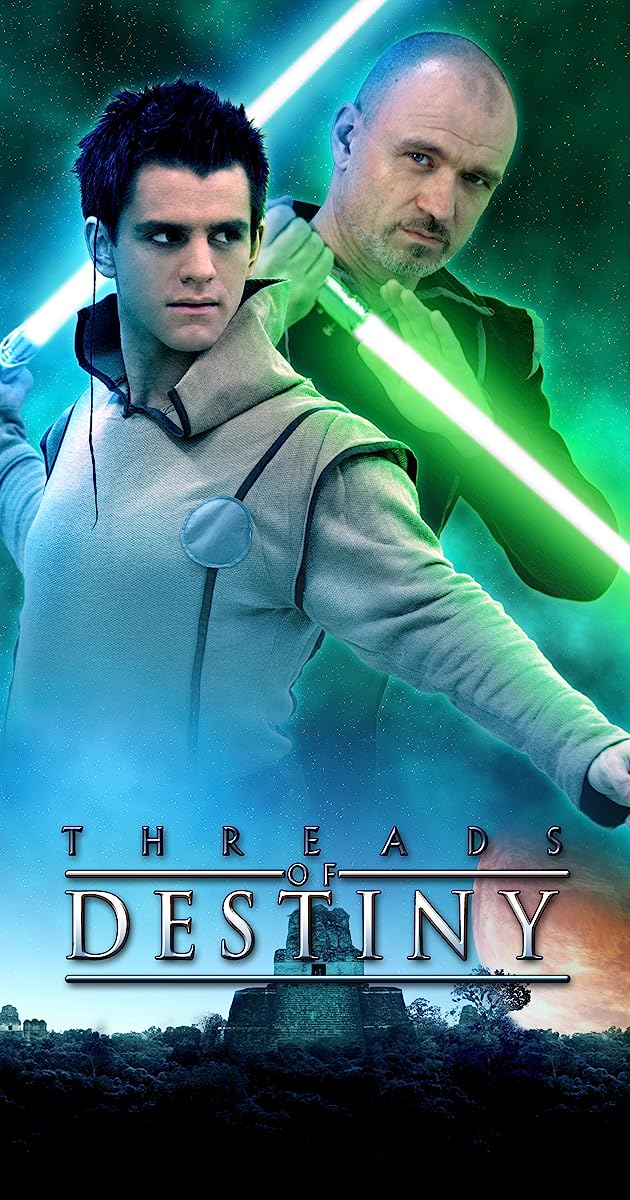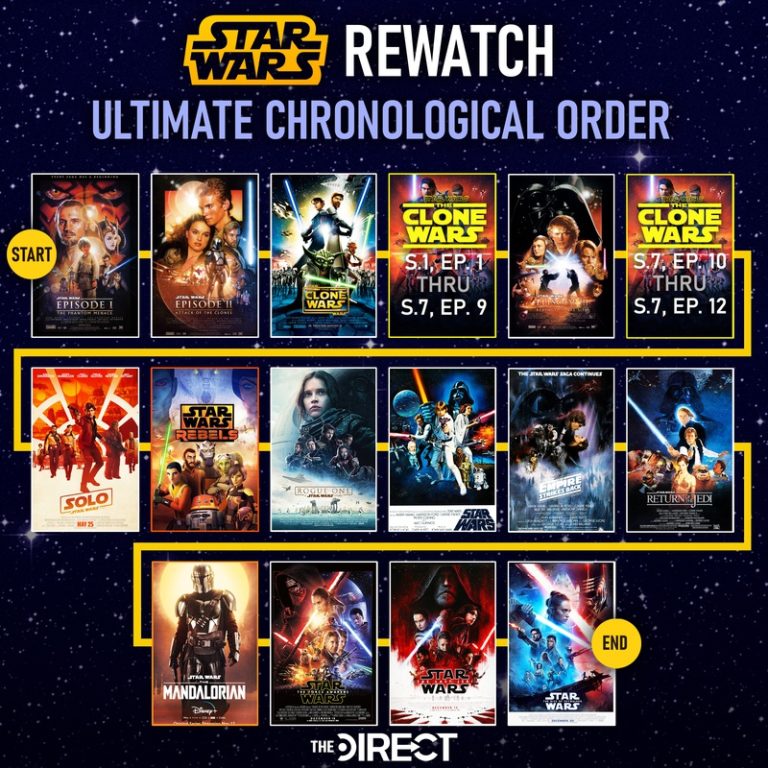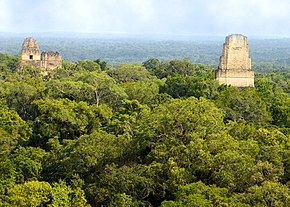What Is The Sequence Of The Star Wars Series?
Have you ever found yourself wondering about the sequence of the Star Wars series? Well, fret not, because I’m here to guide you through this epic space saga! From the original trilogy to the prequels and the sequels, the Star Wars universe has captivated audiences for decades. So, grab your lightsaber and let’s dive into the chronological order of these iconic films!
Now, when it comes to the sequence of the Star Wars series, it can get a bit tricky. The story begins with the original trilogy, consisting of “Star Wars: Episode IV – A New Hope,” “Star Wars: Episode V – The Empire Strikes Back,” and “Star Wars: Episode VI – Return of the Jedi.” These films introduced us to the beloved characters like Luke Skywalker, Princess Leia, and Han Solo, and brought to life the battle between the Rebel Alliance and the evil Galactic Empire.
However, George Lucas, the mastermind behind Star Wars, had a vision to expand the story even further. So, he took us back in time with the prequels, starting with “Star Wars: Episode I – The Phantom Menace,” followed by “Star Wars: Episode II – Attack of the Clones,” and “Star Wars: Episode III – Revenge of the Sith.” These films gave us a deeper understanding of Anakin Skywalker’s journey to becoming Darth Vader and the fall of the Jedi Order.
After the prequels, the story continues with the sequels, beginning with “Star Wars: Episode VII – The Force Awakens,” “Star Wars: Episode VIII – The Last Jedi,” and concluding with “Star Wars: Episode IX – The Rise of Skywalker.” These films introduced a new generation of characters, such as Rey, Finn, and Kylo Ren, while also paying homage to the original trilogy.
So, there you have it! The sequence of the Star Wars series takes us on an epic adventure through time, with the original trilogy, prequels, and sequels. Whether you’re a die-hard fan or new to the galaxy far, far away, these films will transport you to a world filled with lightsabers, the Force, and unforgettable characters. May the Force be with you as you embark on this cinematic journey!
1. Episode IV: A New Hope (1977)
2. Episode V: The Empire Strikes Back (1980)
3. Episode VI: Return of the Jedi (1983)
4. Episode I: The Phantom Menace (1999)
5. Episode II: Attack of the Clones (2002)
6. Episode III: Revenge of the Sith (2005)
7. Episode VII: The Force Awakens (2015)
8. Episode VIII: The Last Jedi (2017)
9. Episode IX: The Rise of Skywalker (2019)

Understanding the Sequence of the Star Wars Series
Star Wars is a beloved franchise that has captured the hearts and imaginations of millions of fans around the world. With its epic storylines, iconic characters, and stunning visual effects, it has become a cultural phenomenon. However, with multiple trilogies, spin-offs, and standalone films, it can be confusing to know the exact sequence of the Star Wars series. In this article, we will unravel the chronological order of the Star Wars films and provide a comprehensive guide for both new and longtime fans.
The Original Trilogy: A New Hope, The Empire Strikes Back, and Return of the Jedi
The journey through the Star Wars series begins with the original trilogy, which introduced the world to the captivating story of Luke Skywalker, Princess Leia, Han Solo, and Darth Vader. The first film, “Star Wars: Episode IV – A New Hope,” was released in 1977 and is often referred to simply as “Star Wars.” It follows the adventures of Luke Skywalker as he discovers his destiny as a Jedi Knight and joins forces with the Rebel Alliance to defeat the evil Galactic Empire.
In 1980, the second installment, “Star Wars: Episode V – The Empire Strikes Back,” hit the big screens. This film delves deeper into the conflict between the Rebel Alliance and the Empire, and reveals shocking revelations about the characters’ identities, including the famous “I am your father” line from Darth Vader. The Empire Strikes Back is considered by many fans to be the best film in the entire series.
The original trilogy concludes with “Star Wars: Episode VI – Return of the Jedi,” released in 1983. In this film, the Rebel Alliance launches a final assault on the Empire, leading to a climactic battle on the forest moon of Endor. The film ties up loose ends and provides a satisfying conclusion to the story of the original trilogy.
The Prequel Trilogy: The Phantom Menace, Attack of the Clones, and Revenge of the Sith
After the success of the original trilogy, creator George Lucas decided to delve into the backstory of the Star Wars universe with the prequel trilogy. These films explore the rise of the Galactic Empire, the fall of Anakin Skywalker, and the origins of iconic characters such as Obi-Wan Kenobi and Yoda.
The first film in the prequel trilogy is “Star Wars: Episode I – The Phantom Menace,” released in 1999. Set decades before the events of the original trilogy, it introduces young Anakin Skywalker and his journey to becoming a Jedi Knight. The film also introduces the Sith Lord Darth Maul, known for his double-bladed lightsaber and menacing appearance.
“Star Wars: Episode II – Attack of the Clones” follows in 2002, continuing the story of Anakin Skywalker and his relationship with Padmé Amidala. The film also delves into the growing tensions between the Republic and the Separatists, setting the stage for the Clone Wars.
The final film in the prequel trilogy is “Star Wars: Episode III – Revenge of the Sith,” released in 2005. This film showcases the tragic transformation of Anakin Skywalker into Darth Vader and the fall of the Jedi Order. It sets the stage for the events of the original trilogy and provides a deeper understanding of the character dynamics and the rise of the Empire.
The Sequel Trilogy: The Force Awakens, The Last Jedi, and The Rise of Skywalker
In 2015, the Star Wars saga continued with the release of “Star Wars: Episode VII – The Force Awakens.” Set several decades after the events of the original trilogy, this film introduces a new generation of characters, including Rey, Finn, and Kylo Ren. It also sees the return of familiar faces such as Han Solo, Leia Organa, and Luke Skywalker.
“The Force Awakens” was followed by “Star Wars: Episode VIII – The Last Jedi” in 2017. This film delves deeper into the conflict between the Resistance and the First Order, and explores the journey of Rey as she discovers her own connection to the Force. It also features a powerful and unexpected twist that challenges the beliefs of both the characters and the audience.
The sequel trilogy concludes with “Star Wars: Episode IX – The Rise of Skywalker” in 2019. This film brings the Skywalker saga to a close, as the Resistance makes a final stand against the Emperor Palpatine and his Sith fleet. It also provides closure to the character arcs of Rey, Kylo Ren, and the other beloved characters from the sequel trilogy.
Spin-Off Films and Standalone Stories
In addition to the main episodic films, the Star Wars series also includes spin-off films and standalone stories that expand the universe and provide additional context to the main narrative. These films include “Rogue One: A Star Wars Story” (2016) and “Solo: A Star Wars Story” (2018). These standalone films offer unique perspectives and shed light on events and characters that are crucial to the overarching story.
In conclusion, the sequence of the Star Wars series can be summarized as follows: the original trilogy (A New Hope, The Empire Strikes Back, and Return of the Jedi), the prequel trilogy (The Phantom Menace, Attack of the Clones, and Revenge of the Sith), the sequel trilogy (The Force Awakens, The Last Jedi, and The Rise of Skywalker), and the spin-off films and standalone stories (Rogue One and Solo). Each installment contributes to the rich and expansive Star Wars universe, offering fans new adventures, unforgettable characters, and timeless storytelling.
Key Takeaways: What is the Sequence of the Star Wars Series?
- The Star Wars series consists of nine main episodes.
- The original trilogy includes Episode IV: A New Hope, Episode V: The Empire Strikes Back, and Episode VI: Return of the Jedi.
- The prequel trilogy includes Episode I: The Phantom Menace, Episode II: Attack of the Clones, and Episode III: Revenge of the Sith.
- The sequel trilogy includes Episode VII: The Force Awakens, Episode VIII: The Last Jedi, and Episode IX: The Rise of Skywalker.
- There are also standalone films like Rogue One: A Star Wars Story and Solo: A Star Wars Story.
Frequently Asked Questions
Here are some frequently asked questions about the sequence of the Star Wars series:
1. What is the chronological order of the Star Wars movies?
The Star Wars movies can be watched in chronological order starting with “Episode I: The Phantom Menace” followed by “Episode II: Attack of the Clones,” “Episode III: Revenge of the Sith,” “Episode IV: A New Hope,” “Episode V: The Empire Strikes Back,” “Episode VI: Return of the Jedi,” “Episode VII: The Force Awakens,” “Episode VIII: The Last Jedi,” and “Episode IX: The Rise of Skywalker.”
However, fans often debate whether it is better to watch them in release order or chronological order. Watching in release order, starting with the original “A New Hope,” allows you to experience the story as it was originally intended and preserves some of the surprise reveals in later movies.
2. Are there any standalone Star Wars movies?
Yes, there are standalone Star Wars movies that are not part of the main saga. These movies are known as “Star Wars Anthology” films or “A Star Wars Story” films. They include “Rogue One: A Star Wars Story” and “Solo: A Star Wars Story.” These standalone movies provide additional background and explore different aspects of the Star Wars universe.
While they can be watched independently, they also fit into the overall timeline of the Star Wars series. “Rogue One” takes place just before the events of “A New Hope,” while “Solo” is a prequel that delves into the early adventures of the iconic character Han Solo.
3. What is the significance of the Star Wars TV series?
In addition to the movies, there are several Star Wars TV series that expand the universe and provide further insight into the characters and events. The most notable TV series is “Star Wars: The Clone Wars,” which takes place between “Attack of the Clones” and “Revenge of the Sith.”
This animated series explores the Clone Wars conflict and introduces new characters while also delving deeper into the stories of familiar characters. It adds depth and context to the events of the prequel movies and is highly regarded by fans.
4. Are there any upcoming Star Wars projects?
Yes, there are several upcoming Star Wars projects in the works. One of the most highly anticipated is “Star Wars: The Bad Batch,” an animated series that follows a group of elite clone troopers after the events of “The Clone Wars.” Another exciting project is the “Obi-Wan Kenobi” series, which will see Ewan McGregor reprising his role as the iconic Jedi Knight.
Additionally, there are plans for more standalone movies and TV series set in the Star Wars universe. The future of Star Wars looks promising, with new stories and adventures awaiting fans.
5. Can I skip any Star Wars movies or TV series?
While it is possible to skip certain Star Wars movies or TV series, it is generally recommended to watch them all to fully immerse yourself in the Star Wars universe. Each movie and series contributes to the overall story and character development.
However, if you are short on time or prefer to focus on specific storylines, you can skip the standalone movies and some of the TV series. Just keep in mind that you may miss out on additional context and backstory.
Final Summary: The Star Wars Series Unveiled
After diving into the captivating world of the Star Wars series, we have finally uncovered the sequence of this iconic franchise. From the original trilogy to the prequels and sequels, the Star Wars saga has taken us on an epic journey through space and time.
In a galaxy far, far away, our adventure began with “Star Wars: Episode IV – A New Hope.” This groundbreaking film introduced us to the beloved characters of Luke Skywalker, Princess Leia, and Han Solo, as they fought against the oppressive Galactic Empire. The trilogy continued with “Episode V – The Empire Strikes Back” and concluded with “Episode VI – Return of the Jedi,” providing a satisfying conclusion to the story.
However, George Lucas, the mastermind behind Star Wars, had more in store for us. He took us back in time with the prequel trilogy, starting with “Episode I – The Phantom Menace.” Here, we witnessed the rise of Darth Vader and the fall of the Jedi Order. The prequels continued with “Episode II – Attack of the Clones” and “Episode III – Revenge of the Sith,” delving deeper into the complex web of politics and power that engulfed the galaxy.
But the story didn’t end there. The sequel trilogy, which began with “Episode VII – The Force Awakens,” introduced a new generation of heroes and villains. Rey, Finn, and Poe Dameron took center stage as they battled against the sinister First Order and sought to restore balance to the Force. The trilogy continued with “Episode VIII – The Last Jedi” and concluded with “Episode IX – The Rise of Skywalker,” bringing the epic saga to a grand finale.
So, whether you’re a die-hard fan or a newcomer to the Star Wars universe, now you know the sequence of this beloved series. May the Force be with you as you embark on your own intergalactic adventure through the Star Wars saga.

